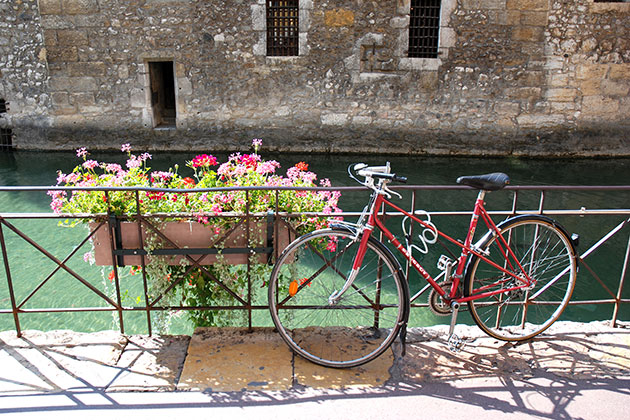
Shooting against the light makes translucent flowers glow and produces interesting shadows in the foreground. Credit: John Wade
How many of us really appreciate the different qualities of light during the course of a single day? The reason you might not have noticed how light changes hour by hour is because the human eye is wonderfully adaptable, continually compensating for varying conditions. But learn how to see the light, and respond to its subtle changes, and your pictures will improve dramatically.
Colour of light
Natural light is made up of all the colours of the visible spectrum: red, orange, yellow, green, blue, indigo and violet. Each has a different wavelength – short at the blue end of the spectrum, long at the red end. Mix all the colours and we get what we think of as white light. The Earth’s atmosphere contains air molecules that scatter light as it passes through them, and they scatter more light at the blue end of the spectrum than at the red end. That’s why the sky looks blue for most of the day.
As the sun sinks lower in the sky, its light is forced to pass through a lot more atmosphere than when the sun is overhead. So more of the short wavelength blue part of the spectrum is scattered, leaving the long wavelength red part to dominate. That’s why the sun looks red at sunrise and sunset.
The time shortly after sunrise and shortly before sunset is wonderful for all kinds of outdoor photography. These are known as the ‘golden hours’. During this time, sunlight is attractively softer and warmer – warm as in its colour, not its actual temperature. Likewise, in the twilight hours when night recedes but before the sun has risen, then again after sunset but before it is fully dark, there comes another magical time. With the sun now below the horizon, only the shorter blue wavelengths are scattered into the atmosphere, giving a blue-predominant, evenly diffused light. These are known as the ‘blue hours’.
So, during the course of any sunny day, starting and ending with the darkness of night, light changes colour like this: black, blue, red, orange, yellow, white, yellow, orange red, blue, black.
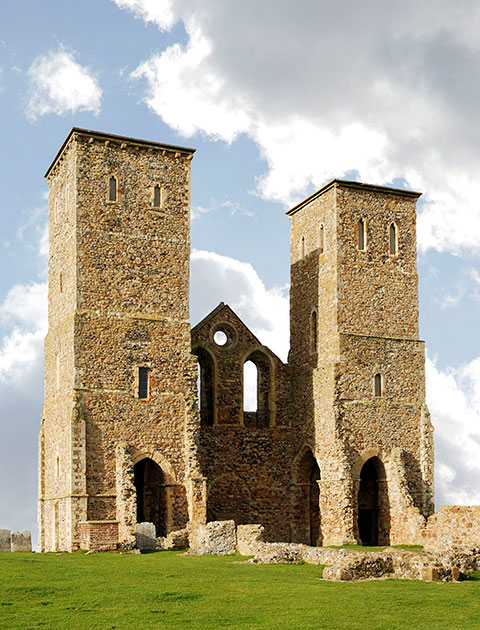
Early morning warm-toned side light introduces shadows while adding texture and depth to stonework. Credit: John Wade
Direction of light
When the sun is overhead in the middle of the day, the light is harsh and the shadows are short. It is not usually accepted as a good time for photography, although once you know the limitations, it’s possible to exploit them for great pictures.
As the sun sinks lower in the sky, its light becomes more directional, and subjects are rendered differently depending on the direction from which light falls on them.
When the sun is behind the camera, shining fully on the subject before you, detail is revealed in each crack and crevice of a building, landscape, or even a human face. The result can be pleasing, but is rarely dramatic.
When light falls on the subject from an angle of, say, 30°-45° things start to improve. Shadows form in crevices, texture is revealed and your picture appears to acquire more depth. Pick a camera position when the light is shining at something like 90° to the subject, and things become even more dramatic. Now, one side of the subject might be brightly lit, while the side facing the camera will fall into shadow. Subjects can be brightly lit against darker areas, which really makes them stand out.
Go all the way and shoot when the sun is shining straight towards the camera, and things change again. Light like this is e ective across water, where the sun’s sparkling reflections can form an integral part of the composition. Alternatively, look for subjects with soft edges – a person’s hair or the coat of a sheep in a field, perhaps – and the sun will draw a halo of light around the subject’s profile. Translucent subjects like leaves, flowers or the sails of boats, lit from behind, glow. More solid objects can be allowed to fall into darkness, producing striking silhouettes against the sun or a dramatic sky.
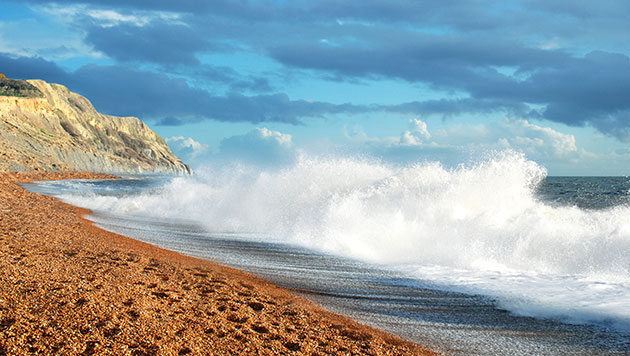
During winter the sun stays low in the sky most of the day, turning particularly dramatic during the golden hours. Credit: John Wade
Summer versus winter
In many ways, winter provides better light for outdoor photography than summer. Although the sun doesn’t shine as much, when it does shine, it appears much lower in the sky all day long. Given that, all the photogenic qualities of low light – its softness, colour and direction – apply throughout the albeit shorter daylight hours, and become even more dramatic during the golden hours.
Overcast light
The light under which you shoot doesn’t have to be dominated by the sun. When the sky is overcast or even slightly raining, the light is less contrasty than sunlight. It is still directional, but much more subtly so and diffused in a way that illuminates everything evenly. Shooting in this kind of light can be an asset with certain subjects. Take a metal sculpture, for example. Shoot it in strong sunlight and you could end up with a hotch-potch of light and shade and shadows. But shoot the same subject in overcast weather and every nuance of the sculpture’s surface will be evenly revealed.
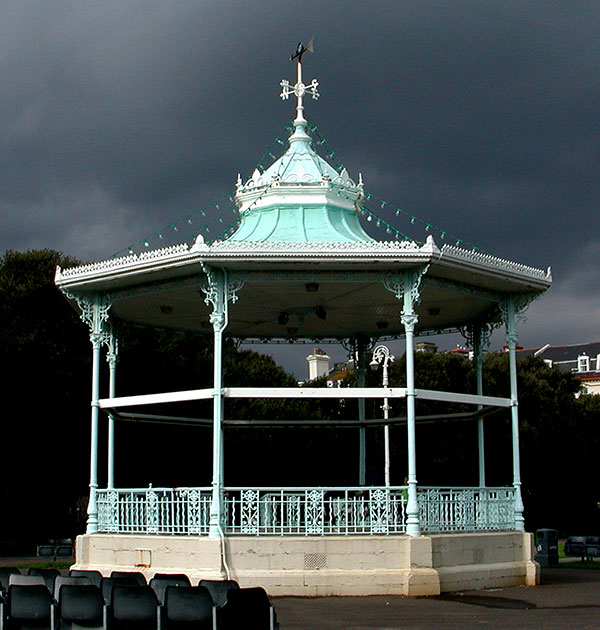
The light just before a storm can be very dramatic. Credit: John Wade
Storm light
There is a very special light that is specific to the time just before or after a storm, when light-coloured subjects seem to take on a brilliance of tone against their more sombre surroundings, even when there is no sun in the sky. If the sun does briefly appear, and it’s behind you with dark skies in front, the scene before you will be brilliantly lit against a dramatically dark sky. If it begins to rain, water droplets in the air refract white light and break it back down into its component colours of the spectrum – which is where rainbows come from.
Sunset and beyond
Sunsets are irresistible for most photographers, but shooting the actual sun as it sinks towards the horizon is not your only option. At such times, turn around to see how the low, red sun is illuminating the scene behind you. The effect is particularly attractive on stone buildings.
On a clear night, when there are no clouds along the horizon, in the few minutes after the sun has vanished you might see an afterglow as the sky takes on red, then orange hues along the horizon, fading to purple and blue higher in the sky. It’s something that is worth shooting for its own sake, but within minutes it’s gone and you are into the blue hours. This light works well over water, reflecting the darkening sky, especially if there are light-coloured boats dotted on the water to pick up and reflect back what’s left of the fading light.
And then night falls. It’s time for some night photography and a whole new way of looking at the light. But that’s another story.
Lucky shot
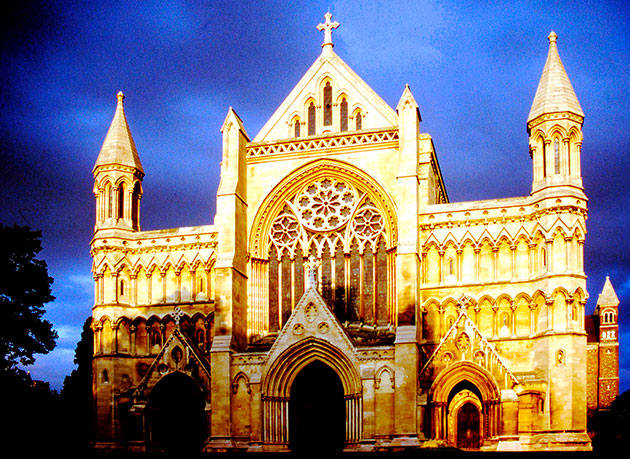
Credit: John Wade
St Albans Cathedral is an impressive building. But shot around midday, with the sun obliquely behind it (see below) didn’t do justice to its grandeur. My estimation was that early evening, about an hour before sunset, would be better.
By the time I returned, the sky was heavily overcast in every direction. But then came a break in the clouds behind and at an angle to where I was standing. The sun, not yet low enough to be red but just passing through the orange/yellow stage of the spectrum, shone through the gap and illuminated the cathedral with golden light against the dark sky. The effect only lasted a few minutes.
Sometimes it’s not just about being able to anticipate the light, it’s also about being in the right place at the right time.

Shooting the cathedral during the middle of the day didn’t do justice to its gandeur. Credit: John Wade
10 tips for seeing the light
- For maximum atmosphere, shoot during the golden hours in the early morning or late afternoon.
- Use frontal lighting to reveal strong detail in a subject.
- When shooting in overcast light, use your preferred image-processing software to later boost the contrast a little.
- Make the most of sidelighting to reveal texture and give a more three-dimensional interpretation of the subject.
- Try backlighting for more drama, creating clear silhouettes against brightly lit backgrounds.
- Use strong shadows created by backlighting as part of the composition. You can even make shadows the subject.
- When shooting against the light, never look directly into the sun, even when wearing sunglasses.
- Avoid direct sunlight falling on the lens and creating flare. Use a lens hood.
- If there are strong differences between the well-lit and shadow areas of a picture, use your camera’s spot-metering mode to expose for the most important area of the frame.
- If you include the sun in your picture, your camera’s meter might be fooled into thinking the overall scene is brighter than it really is. Use plus one or two exposure compensation to open up one or two stops and rebalance the tones.
Kit list
- Mobile phone apps Three apps are of particular use: The Photographer’s Ephemeris, The BBC Weather App, and a compass app (provided with many mobile phones). Each of these will help you to plan your shoot.
- Compass The sun rises in the east, sets in the west and – in the northern hemisphere – travels across the southern sky during any day. A compass helps to anticipate when it will be in the best position for your chosen subject.
- Lens hood A good, deep lens hood helps to eliminate, or at least significantly reduce, flare when there is a risk of low, strong directional light hitting the lens and potentially spoiling your shots.
- Rain cover When you’re shooting the dramatic light just before a storm it’s easy to get caught out. Be prepared by carrying a rain cover to protect your gear. It’s also a good idea to pack a waterproof jacket for yourself as well.
Regular AP contributor John Wade is well known for his books and magazine articles on camera history, published in the UK and America. His pictures for this article are a mixture of digital camera images and scans of transparencies from older film cameras.







